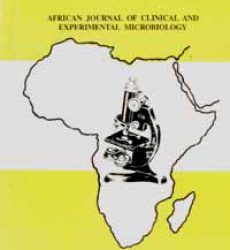Abstract
BACKGROUND: Neonatal septicaemia is a leading cause of morbidity and mortality worldwide, especially in the tropics. The risk factors vary, and the clinical features of neonatal septicaemia may be vague and nonspecific, therefore a high index of suspicion is vital to early diagnosis and treatment. The aetiological agents and their antibiotic sensitivity pattern have continued to change (in the same centre over time), hence the need to have undertaken this study.
AIMS AND OBJECTIVES: The primary objective of the study was to determine the risk factors influencing the aetiology of neonatal septicaemia at the University of Maiduguri Teaching Hospital.
PATIENTS AND METHODS: The study was prospective and all the newborn that had clinical diagnosis of septicaemia were consecutively enrolled and admitted to the Special Care Baby Unit of the Department of Paediatrics of University of Maiduguri Teaching Hospital (UMTH). The patients were appropriately investigated including blood cultures, cerebrospinal fluid cultures and urine culture among others.
RESULTS: One hundred and ten neonates were studied, of these 46(42.0%) had positive blood culture, while 64 (58.0%) were blood culture negative. Eighteen (39.1%) of the septicaemic neonates were inborn, while 28 (60.9%) were out born. The incidence of neonatal septicaemia among babies delivered at UMTH was 5.9/1000 live births and the male to female ratio among septicaemic neonates was 1.9:1. The common risk factors for NNS were prolonged rupture of membrane (PROM), prematurity and low socioeconomic status of parents among others. Fever was the commonest clinical feature at presentation (87%), others include: poor feeding (64 %), excessive crying (33%), tachypnoea, hepatomegaly were some of the common examination findings. Staphylococcus aureus 16(69.6%) and Streptococcus pyogenes 5(21.8%) were the predominant Gram positive organisms isolated while Escherichia coli 9(39.1%) and Klebsiella Pneumoniae 7(30.4%) were the predominant Gram negative organisms isolated.
CONCLUSION: Mortality was high in infection associated with Gram negative organisms and in the presence of conditions/complications like urinary tract infections, tetanus and meningitis
Download full journal in PDF below
Factors infleuncing neonatal septicaemia in Maiduguri, north-eastern Nigeria

